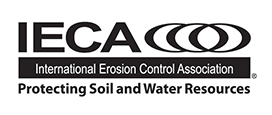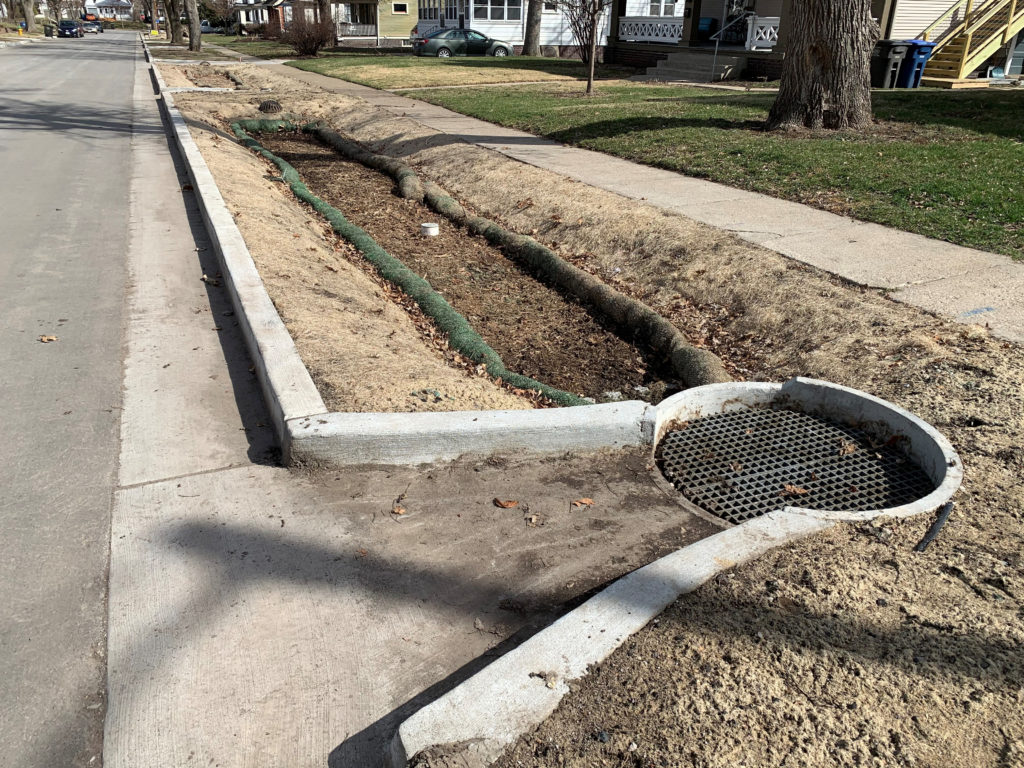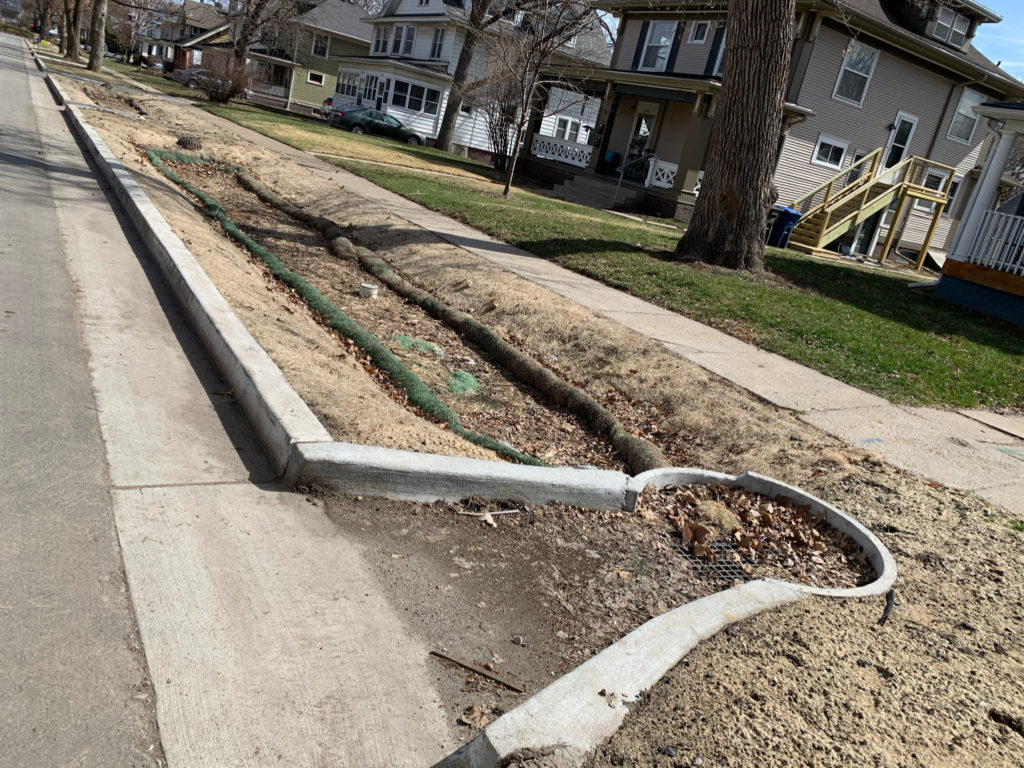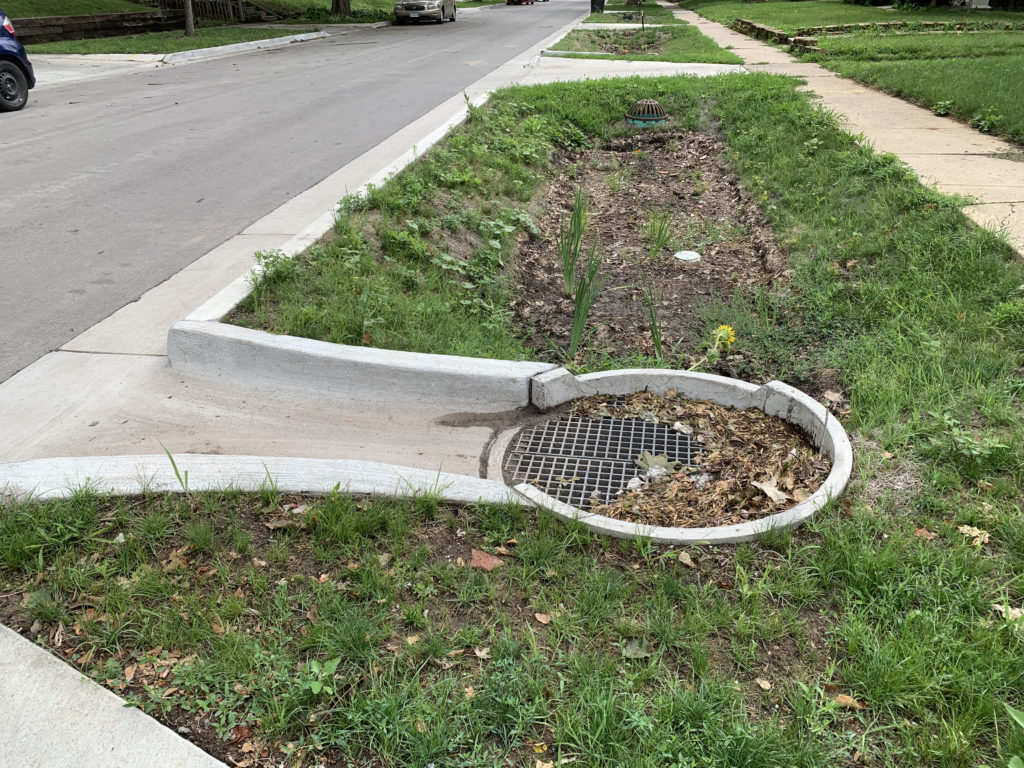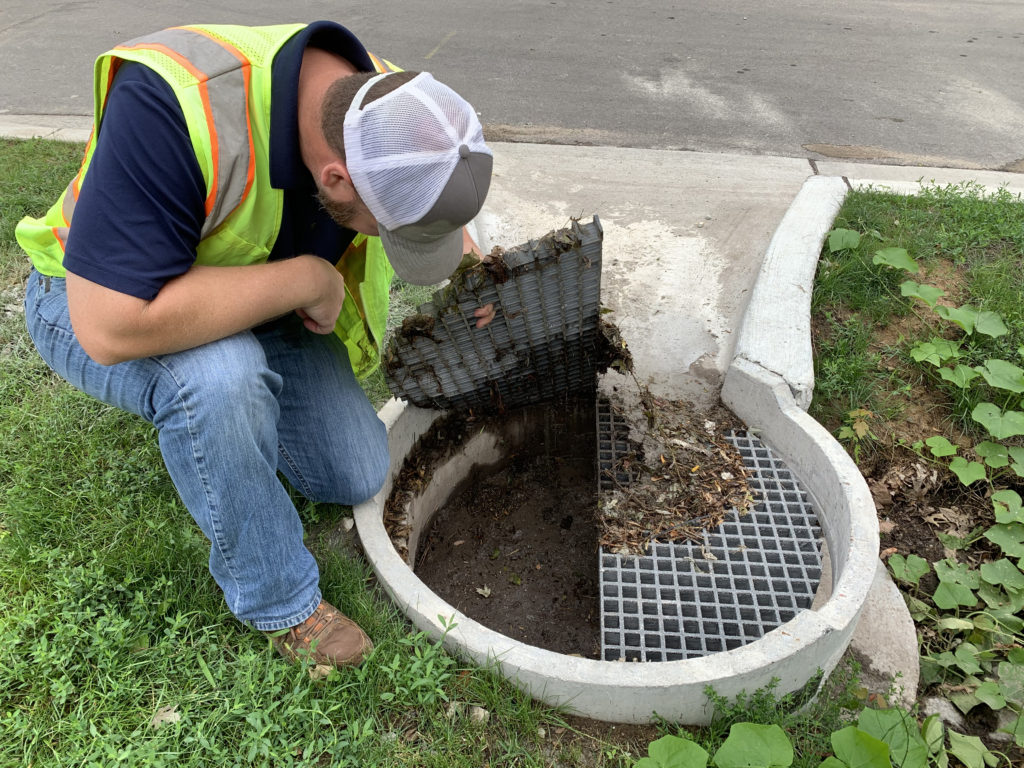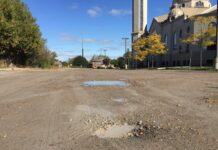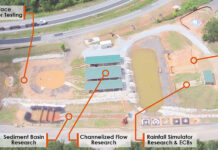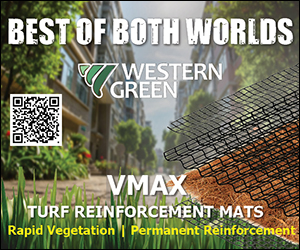By Bill Murphy, PE
The city of Des Moines, Iowa, U.S. is investing in its infrastructure to eliminate combined sewer overflows (CSOs). Like many cities, Des Moines has neighborhoods with no existing storm sewer or undersized storm sewer systems that need to be replaced or reconfigured. Removing several blocks of paved streets and relocating an unimaginable number of utility conflicts to install an entirely new storm sewer system
is impractical.
One such example is the Near West Side Sanitary Sewer (NWSSS) project located near Drake University. The city’s consultant engineer for this project, Wes Farrand, PE, Snyder & Associates, incorporated green infrastructure (GI) to intercept stormwater runoff and take multiple gulps of stormwater along the curb to capture, treat and slowly release a reduced flow downstream. A residential neighborhood along the 2800 block of Rutland Avenue in the upper corner of the project’s watershed was selected. This mature neighborhood has no storm sewer inlets along the street. Minor street flooding was common.
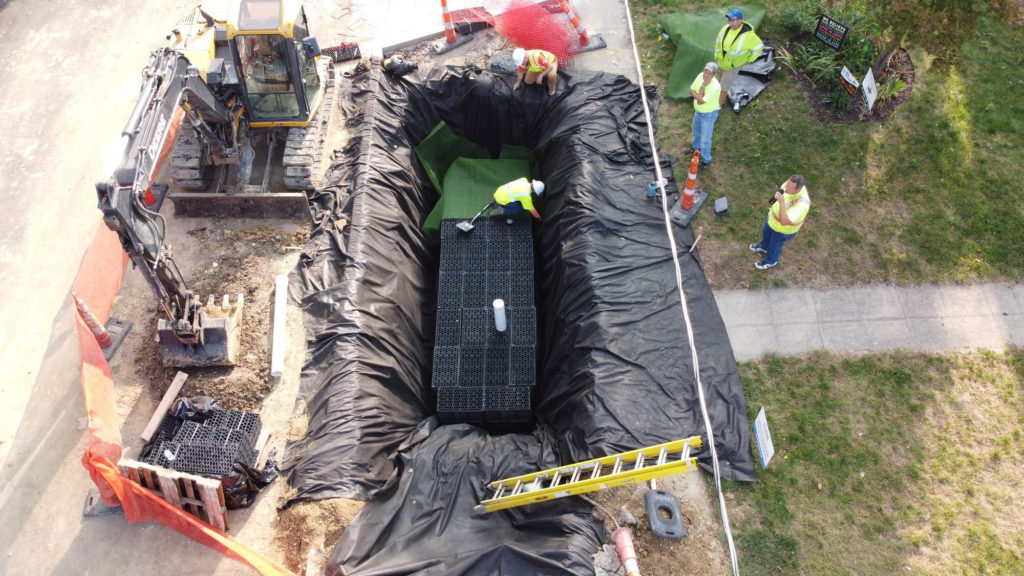
The project engineer started by creating depressions between the back of curb and the existing city sidewalk to create shallow basins for ponding stormwater as it slowly drained down through a bioretention system. After first maximizing the areas bounded by street, sidewalks and neighborhood driveways, Farrand reduced the footprint of those proposed areas to account for mature trees, utility poles and any existing underground utility conflicts. What remained were six individual areas where a bioretention system could be installed.
Farrand started his design with the end in mind. Since bioretention systems are typically designed to handle the first flush or a similar design storm event, he accounted for system overflow during major storm events. He designed a beehive inlet structure at each of the six cells. Those structures connected to a collector storm sewer pipe under the street. The underdrain of each bioretention system connected to a corresponding newly installed overflow structure. Since the bioretention cells were built after street construction was completed, it was critical to not damage the newly paved street or residential driveways during construction of the bioretention systems.
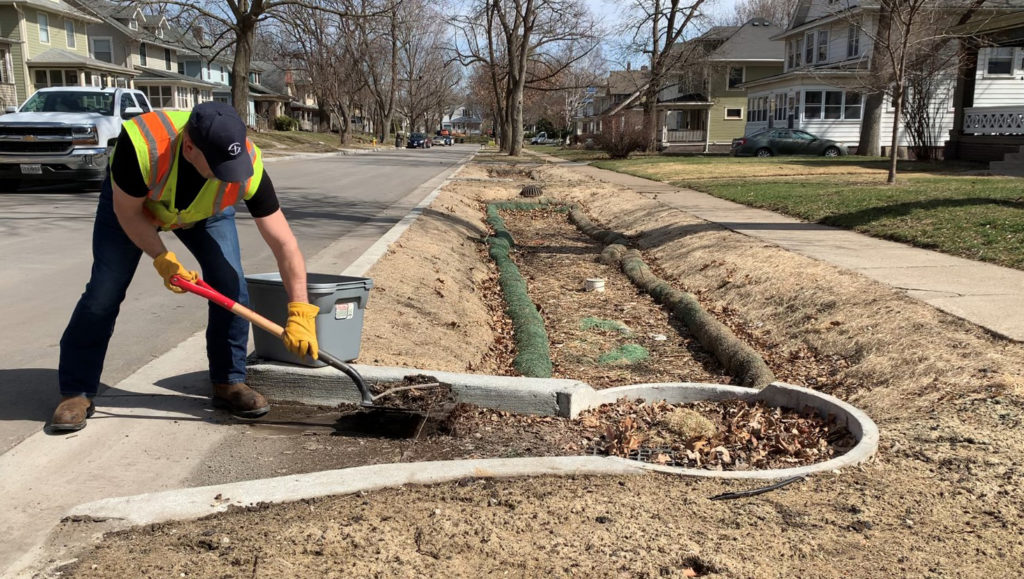
Each of these systems receives the first flush from its corresponding drainage area. Any major storm event that fills the bioretention cells and overtops into the overflow structures will continue to drain down the street as it always has, but with much less flooding since each of these cells will be taking a “gulp” and reducing the peak flow. Exact numbers for the design flow calculations is not readily available since we maximized the size of each cell during construction.
Due to late fall construction, proposed plants were planted in the spring. Plants are vital to these systems for long term success, greater pollutant removal and pleasing aesthetics. Plants remove phosphorous and nitrogen from stormwater and their roots provide pathways for water to pass through the media and into the underdrain. Locally available plants that are hardy in regard
to periods of drought and short term inundation with standing water will thrive
in bioretention.
Maintenance was a top concern of the city so Farrand proposed curbside pretreatment devices to capture large debris and most sediment before releasing the runoff into the bioretention cell. Construction of these GI improvements was completed fall 2020. A site visit in March 2021 showed that the pretreatment devices on all six cells worked as designed and captured debris and sediment that would have otherwise settled onto the bioretention systems.
The tools used to clean the debris and sediment from the curbside pretreatment device and the bioretention cell were a shovel, a rake, a pitchfork and buckets. Maintenance was simply a matter of removing the material from the street gutter, through the concrete flume and from above the grate of the pretreatment device. The grate is manufactured as two halves so one person can easily lift and remove the grate. After removing the grate, the sediment is scooped out of the unit and the filter screen is removed for cleaning. Once all cleaning is done, the filter screen and grate are reinstalled.
The pretreatment device at the first bioretention cell on Rutland Avenue yielded 29 lbs (13 kg) of debris and sediment after only five minutes of maintenance cleaning. Following the demonstration of how to properly clean a bioretention cell, the other cells were cleaned by the general contractor or landscape contractor under the city’s direction. No measurements of sediment were taken at the other five.
Every city will need to determine how to best manage green infrastructure after installation. Like any filter, bioretention systems and pretreatment devices must be inspected and cleaned as part of routine maintenance.
Once the curbside pretreatment device is cleaned, the bioretention cell must be cleaned. Thanks to the pretreatment device, there is no sediment in the cell. Most of the debris in this cell is leaf litter due to the mature trees in this residential neighborhood. Similar bioretention systems in retail or industrial areas typically collect a large percentage of trash rather than vegetation. Since this is a new project, this cell had not yet received its proposed plantings at the first site visit, which made cleaning easy and relatively quick. After 20 minutes of removing debris—mostly by hand—87 lbs (39 kg) of material was collected. That brought the total amount of sediment and debris collected from this first system to 116 lbs (53 kg). With a drainage area of 115,000 ft2 (10,684 m2) for this one cell, that is a lot of pollution captured locally and not allowed to flow downstream through the city of Des Moines and eventually into the Des Moines River.
Filters collect debris and sediment after plantings installed to make cleaning and maintenance of the bioretention cell easier.
Plantings were added in the spring to create the “bio” component of the cell. A site visit several months later showed that sediment and debris inside the pretreatment units proved that the “filter” was working as intended and kept the debris out of the bioretention cells. It will be much easier to remove the sediment and debris from the pretreatment units than it would be to carefully try to remove it from the bioretention cells without damaging the plants.
There will still be some maintenance required in each bioretention cell but it will be much simpler and quicker than it would have been without the pretreatment units. Any filter that is actually working should be dirty and need to be cleaned or replaced. The same concept applies to your furnace filter at home and the air filter in your car.
Since this Rutland Avenue project is part of a very large public improvement project there is a long transition period after the GI construction is complete but before the entire project is finished. During that time the city, contractor and neighbors are not sure who is responsible for maintenance. That is part of the education that is necessary following installation of bioretention cells that engineers must communicate to cities.
This one city block of GI makes a significant difference in reducing localized flooding in this residential neighborhood. However, the bioretention systems only make a minor difference in the flooding and water quality in the NWSSS watershed because it is only one block of GI, but it is one small step in the right direction. In order to make a significant impact on a watershed scale these types of practices, along with permeable paving, soil cells for trees, inline stormwater filters, underground detention and more would have to be installed and maintained throughout the watershed. The natural progression is to implement GI strategies throughout the entire city. That will require long term strategies from all stakeholders.
Think of it like the starfish story that makes the rounds on social media. A guy walking along the beach is picking up dying starfish and tossing them back into the ocean to save their lives. Another man walking towards him says “There are countless dying starfish. Do you actually think you are making a difference?” The first guy picked up another starfish, tossed it into the water and said with a smile, “It made a difference for that one.”
About the Expert
Bill Murphy, PE, civil engineer, Quick Supply Co., ASP Enterprises, Bowman Construction Supply, Cascade Geosynthetics. He spent the first 15 years of his career as civil engineering consultant before becoming a stormwater expert in the construction supply industry more than 10 years ago.
